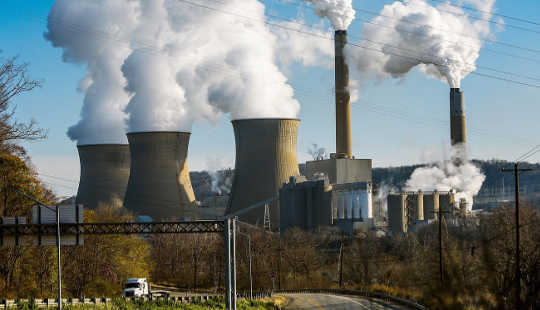
The Senate inquiry’s report into the planned closure of coal-fired power stations will no doubt shed light on the compelling health reasons to close them.
Coal-fired stations are a health hazard to their local communities and beyond due to the pollutants they emit. The resulting illnesses are a significant cost to health budgets. Climate change caused by burning fossil fuels brings its own health burdens.
A 2009 Australian Academy of Technological Sciences and Engineering report put the health costs of coal-fired power stations at A$13 per MWh of electricity generated from coal (about A$2.6 billion a year). Climate change and other environmental costs were not included.
Pollutants and health
The three main pollutants from coal-fired power stations are sulphur dioxide, nitrogen oxides and invisible particulate matter (known as PM10 or PM2.5).
Collectively, they act as irritants and cause inflammation in the lungs leading to asthma, chronic lung disease, and restricted lung growth in children. The small particles (PM2.5 and smaller) are associated with lung cancer and are also absorbed through the lungs into the blood stream to cause angina, heart attacks and strokes.
Research estimates that 24 people die for every terawatt hours (TWh) of coal burnt. Children are at particular risk from air pollution because they breathe more for their body weight than adults.
In the Hunter Region of New South Wales there are many open cut coal mines and four active coal-fired power stations. The surrounding population has a higher incidence of the above diseases and has levels of ill health and mortality not experienced elsewhere. Air pollution from Hazelwood in Victoria, to be closed in 2017, causes about 18 deaths a year, around 1% of annual mortalities in Gippsland.
Pollutant levels emitted from the chimney stacks of each plant are reported annually and are publicly available from the National Pollutant Inventory.
While pollution and its health hazards are greatest near power plants, particulates, with attached sulphur dioxide, can travel 100km or more. This can contribute to pollution in towns and cities, as seen in Richmond, to the west of Sydney.
Phased closures for health
For the reasons above, the phased closure of power stations is urgent, and should occur over the next decade.
Ideally, the order of closure is based on intensity of both carbon dioxide emissions and air pollution, and the rate at which renewable energy is encouraged to replace the plants.
On health grounds, the order for closure should be: Yallourn and Loy Yang in Victoria and for New South Wales, Mt Piper, Liddell, Bayswater, Eraring and Vales Point. Tarong in Queensland, with high levels of all pollutants, also needs to close early.
Governments have not provided any plans for new jobs and industries, for example in renewable energy, to facilitate closures. So, non-government organisations have stepped in.
Medical organisation, Doctors for the Environment Australia, has worked for the past five years on a plan with a coalition of community organisations in Port Augusta, South Australia.
That has included informing local communities of health risks, existing pollution-related illness, and poor air quality, as well as a plan for transition of their employment into concentrated solar thermal renewable energy.
Local council and Doctors for the Environment members delivered more educational material over coming months and years.
Publicising air quality reports helped the community to understand the hazard. Such initiatives helped energise the community to work for closure of the station and bring pressure for clean air and new employment opportunities.
Monitoring emissions
There are no safe levels of air pollutants. So, the more stringent the emission guidelines, the greater the potential public health benefit.
Our submission to the Senate inquiry questions whether health interests were paramount when setting standards for air quality. For instance, it is not clear on health grounds why New South Wales and Queensland imposed weaker pollution guidelines than other states.
Monitoring should be subject to independent review, be transparent, immediately available and conducted by the state Environmental Protection Authority rather than power station operators.
In our experience, there is a lack of monitoring both air quality and of health impacts in exposed communities, for example in Lithgow and Lake Macquarie and close to many other power stations. Therefore local communities cannot adequately protect vulnerable groups, like people with asthma, by recommending reduced pollution exposure on high-risk days.
Many communities around power stations are aware of the threat of unemployment following closure and suppress the thought of ill health. However, as in Port Augusta, they need to understand their health risks, and most of all, risks to their children.
Experience suggests state and federal governments need to join with community organisations and the community itself to develop a plan for future closure of each station based on health gains, future industry development and employment.
![]()
About The Author
David Shearman, Emeritus Professor of Medicine, University of Adelaide
This article was originally published on The Conversation. Read the original article.
Related Books:
at InnerSelf Market and Amazon
























